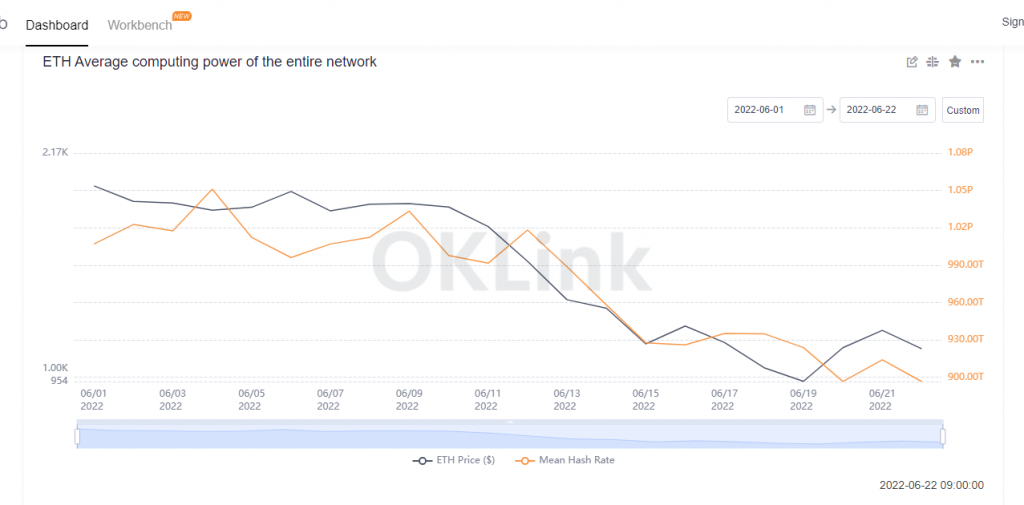Ethereum’s much-anticipated upgrade, The Merge, is just a few months away. With the consensus mechanism all set to transition from Proof of Work [PoW] to Proof of Stake [PoS], miners will become obsolete.
Per the latest data from The Block, Ethereum miner profits have been consistently falling over the past few months. In May, the cumulative revenue stood at around $ 1.01 billion. With just a week left for June to conclude, the figures for this month stand at a fizzled-out $435 million.


At this stage, it is worth recalling that Ethereum’s hashrate surpassed the ATH of 1000 TH/s at the beginning of this month. However, according to the latest data, it has slipped by 12% over the past 20 days. So, what does this mean? Is the ecosystem in a fix?


Every coin has two sides, and so does Ethereum’s
Now, hashrate as such measures the computational power used while mining. Simply put, it gauges the speed of mining. A higher hashrate means more computing power would be required to verify and add transactions to the blockchain. It makes the network more secure because it would take more miners to take over and attack the network.
Now, even though a falling hash rate is not essentially a good sign, there’s a silver lining when viewed from the miner’s perspective. A lower hashrate means that the miners remaining within the ecosystem would fetch more, for the competition is essentially more negligible. To simplify further, with fewer people mining, it’d become easier to get ETH for those who stay.
With The Merge on the cards, it is evident that miners would keep exiting the Ethereum ecosystem. However, developers have already clarified that the same wouldn’t pose a risk to the security if they gradually withdraw. The ones who choose to stay until the end have the chance of grabbing a more significant piece of the pie.





